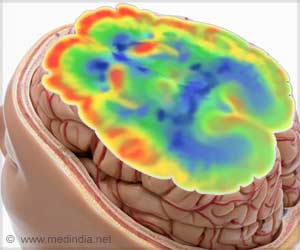Delirium risk among intensive care unit patients was predicted by new artificial intelligence algorithms.

‘Around 80% of the patients in intensive care unit (ICU), develop delirium. Delirium is a sudden disturbance in mental function that causes confusion and decreased awareness of one’s environment.
’





Clinicians already knew that ICU delirium occurs more often in older and sicker patients, and that ICU patients who develop delirium are at higher risk of prolonged hospitalization, future dementia, and death. Anti-delirium interventions such as care bundles, changing medications, and earlier-than-usual occupational and physical therapy are effective, experts say, but limited time and resources, as well as the often unpredictable needs of ICU patients, prevent most ICUs from using them in every patient.
Machine Learning Algorithms to Detect Delirium Risk
The new AI program, designed by undergraduate and master’s level engineering students in a precision medicine class taught by Stevens, applied AI algorithms to a publicly available dataset covering more than 200,000 ICU stays at 208 hospitals around the country.“The underlying idea was that this routinely collected data stored in patients’ electronic health records contains signatures that are associated with delirium risk,” says Kirby Gong, a recent master’s degree graduate from the Johns Hopkins Department of Biomedical Engineering and first author of the new work.
Using the data, the team developed two computerized models to predict delirium risk. One, a so-called static model, takes a single snapshot of patient data shortly after admission — information about age, severity of illness, other diagnoses, physiologic variables, and current medications — to predict delirium risk at any point during a hospital stay. The second, a so-called dynamic model, monitors information over hours and days, including repeat blood pressure, pulse, and temperature readings — to provide the patient’s continuously updated risk of delirium over the coming 12 hours.
Once the researchers developed the AI models, they tested them on two other sets of data from a Boston hospital, collectively covering more than 100,000 ICU stays. The area under the receiver operating characteristic curve (95% CI) for the first 24-hour model was 0.785, meaning that it was able to predict which patients would get delirium 78.5% of the time. The dynamic model performed even better, predicting delirium-prone patients up to 90% of the time.
Stevens says he is now testing the models on historical patient data from Johns Hopkins Medicine ICUs, and plans to design a clinical trial to test the use of the algorithms — and how they could shape clinical care — in patients newly admitted to an ICU. His lab is also applying similar artificial intelligence approaches — often in collaboration with engineering students and faculty — to predict stroke, heart failure, pulmonary embolisms, and other emergent events seen in critical care medicine.
Advertisement
In addition to Robert Stevens and Kirby Gong, other authors on the anesthesiology paper are Akaash Sanyal, Joanna Guo, Han Kim, Hieu Nguyen, Joseph Greenstein, and Raimond Winslow of Johns Hopkins.
Advertisement












